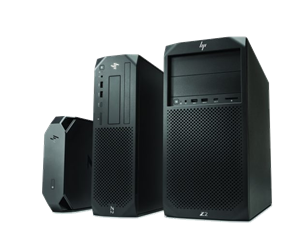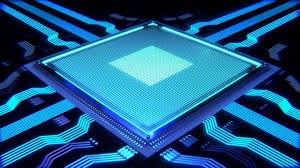Essential though it is, most architects and engineers don't have the time to understand what lies beneath the IT systems and equipment they use on an everyday basis. This can also sometimes be the case for people who have been given the responsibility of looking after it.
With technology continuously updating, it is difficult to keep up with the latest updates and ever-expanding jargon. As a result, we have put together a series of blogs explaining the systems and equipment used regularly by the industry in attempt to "lift the mist" on what lies beneath them and their importance in the world of design.
Personal Computers (PCs)
When looking at PCs, they can be very daunting with all the acronyms and numbers used to describe them but when you dig behind these terms, you can see that each has their use, and although not always needed, can be useful for comparison.
Whether you use a desktop, laptop, notebook, workstation or other "client" device, the interiors of a PC will generally be the same. In this blog, I will discuss the common components of most PCs including the processor, memory, motherboard, storage and graphics, highlight their usage and what they do, as well as some common terms used with them.
Workstations
 A common type of PC used within the construction sector is the workstation unit. Although a workstation has the same number of components as a typical desktop PC, the quality and usage of these components are very different. Typically, a workstation has server grade components within it like Intel's Xeon processor, allowing for better performance over business applications, as well as better reliability; especially for continual heavy usage like 3D workloads.
A common type of PC used within the construction sector is the workstation unit. Although a workstation has the same number of components as a typical desktop PC, the quality and usage of these components are very different. Typically, a workstation has server grade components within it like Intel's Xeon processor, allowing for better performance over business applications, as well as better reliability; especially for continual heavy usage like 3D workloads.
Workstations are also built with approved vendor parts which not only provide extensive hardware vendor support, but Independent Software Vendor (ISV) support like Autodesk. When it comes to business workloads and critical deadlines, using a non-workstation system may seem cheaper upfront, but can cost a company more in the long-run.
 Central Processing Unit (CPU)
Central Processing Unit (CPU)
The Central Processing Unit (CPU), commonly referred to as the processor, is often referred to as the brains of the computer. As suggested by its title, the CPU is central to the operations of the system.
Technically the CPU is there to translate instructions, but in terms of computing it is the most important part of the system. The first thing to understand is the architecture and instruction set which refers to the operating system and software that can be used on the machine. Most PCs now run on the x86 family with the majority of Windows, Mac and Linux systems running on this architecture.
Another popular architecture is ARM which is predominantly used within mobile devices. It's important to note that Microsoft only supports the latest Intel and AMD chips with its Windows 10 operating system.
The CPUs primary job is to fetch information from storage like memory and hard disks, run instructions or commands over it, and then send it to another area of the system like the graphics card or back to memory. CPUs have many properties that make up their specifications and these can often be listed in a single line as shown in a couple of examples below.
Intel Xeon Bronze 3104 1.7G, 6C/6T, 8M Cache, No Turbo, No HT (85W) DDR4-2133
Intel Core i7-6700v6 3.4G, 4C/8T, 8M Cache, w/ HD Graphics 530 (35W) DDR4-2133
So let's break these strings down and explain what each part means...
|
Make
|
Intel
|
The make or manufacturer. As explained earlier, this will either be Intel or AMD
|
|
Model
|
Xeon Bronze 3104 /
Core i7-6700v6
|
The model of the processor. In this case, the make is Intel’s Xeon - a professional business and server processor. Manufacturers have a range of processors for different uses and price perspectives
|
|
Clock Speed
|
1.7G
3.4G
|
Speed of the processor. In this case, the speed is 1.7Ghz which means that the processor can approximately handle 1.7 billion instructions a second. This is historically one of the main methods of checking the speed of a system, but it only works with comparable models. With the introduction of new architectures and features, the only true way of confirming the speed of a processor is through a series of real-world application benchmarks
|
|
Cores and threads
|
6C/6T
4C/8T
|
The C in this property stands for cores and the T for threads. Nearly all processors now come with multiple cores meaning that they can run more than one instruction at once and for specific instructions, the cores can then run more than one thread (if the processor has this feature). In Intel’s case, this is called Hyper-threading.
For cores and threads to be used properly however, the software has to be made to work with those features and not all software products are. In theory, this means that if the software can take advantage of all the processor resource, the above core CPU running at 3.4G with 8 threads can run 8 x 3.4 billion or 27.2 billion instructions a second!
|
|
Cache
|
8M Cache
|
Cache is a special form of memory that the CPU uses. Cache memory on a CPU is extremely fast, the fastest memory within any computer. Most modern CPUs have distinct levels of cache, starting at 1 and normally going up to 3, getting slower but larger as it goes up. Typically when a cache level is given, it is level 3 which is shared memory between some or all the cores allowing them to work together. Like RAM memory, cache improves a systems performance by reducing the time to access data.
|
|
Features
|
No Turbo, No HT
HD Graphics 530
|
These are the features that are included or not included with the CPU:
No Turbo – Intel has a technology that allows the cores of a CPU to go faster than their standard speed. This is only allowed if the CPU does not get too hot. The core Intel Core i7-6700v6 has the turbo feature enabled meaning the cores can go up to 4Ghz
No HT – another Intel technology called Hyper-threading as mentioned previously
HD Graphics 530 – a lot of processors now include a basic GPU which we explain in our next blog
|
|
Power
|
(85W)
(35W)
|
This states the CPUs Thermal Design Power (TDP) which basically means the maximum amount of power the CPU can draw under normal application usage. As a computer turns all the electricity it uses into heat, this value shows the maximum amount of heat generated by a CPU
|
|
Memory Clock
|
DDR4-2133
|
This is the maximum clock rate a CPU can use with the memory (RAM) which we explain in our next blog.
|
There are also other variables included with CPUs which can include connections to other components of the system like the graphics cards or the number of internal lanes and speed between cores. As discussed, the CPU is a complex and vital piece of equipment for any computer. Choosing the right one can be difficult due to so many variables. Going by just the number of cores or clock rate doesn’t always give you the best processor; you need to take in account what software you are running, what workloads and for how long, what other components you have, benchmarks, pricing and a host of other items.
To find out more about any of the terms mentioned in this blog post or for help with choosing the right systems/components for your business, please contact us.
For part 2 of this blog series which attempts to "lift the mist" on what lies beneath the systems and equipment used regularly by the industry, click here.

Author
Simon Hurrell
Simon has been working in the IT industry for 15+ years with his focus and qualifications over the last 5 being within the IT Architecture space. Simon has worked for a number of IT organisations including some large, well-known data centre and cloud providers.
His knowledge covers a broad range of subjects within IT, and he has helped many clients choose solutions to solve problems and meet their business needs. Some of these include large infrastructure solutions, cloud-based projects, client-based hardware replacement programmes, and multi-stage IT tenders for new IT incumbents.







